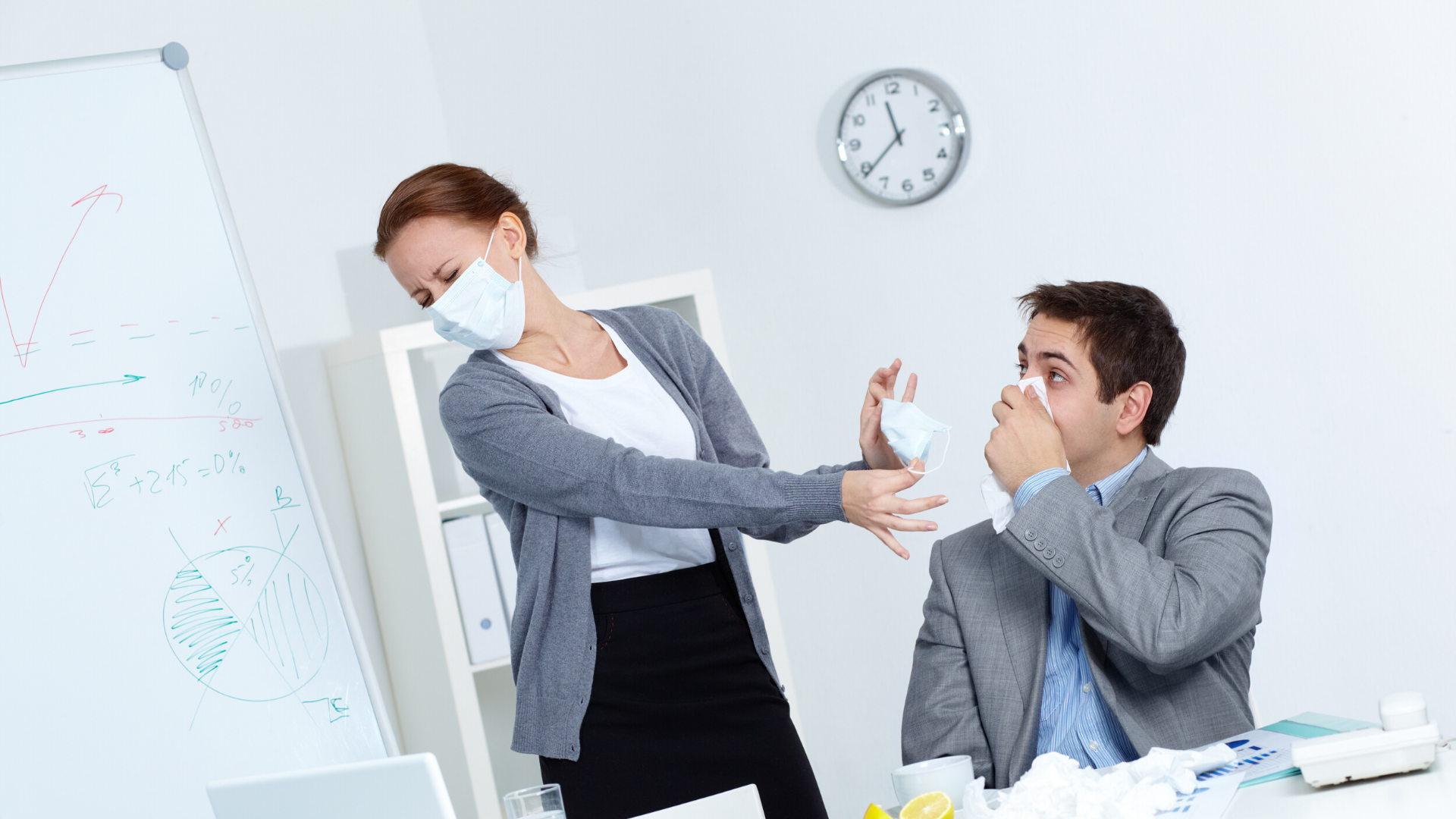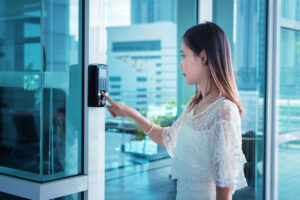Demand for fever detection camera solutions has risen to unprecedented levels in response to the COVID-19 crisis. Retail stores, offices, airports, hospitals, banks, and houses of worship are all starting to implement this technology to help identify people with fevers coming into their facilities. Now people in every industry around the world are wondering how these solutions work, if they are accurate, what their options are, and how to implement the system. We will answer each of those questions for you in this article.
OVERVIEW OF HOW FEVER DETECTION CAMERAS WORK
Fever detection cameras are very similar to thermal imaging cameras used for measuring heat in buildings and monitoring perimeters of secure facilities. However, instead of focusing on finding hotspots or detecting the presence of a person, these cameras are specifically designed to determine human body temperatures. A temperature threshold, typically 100° Fahrenheit, is configured in the system and will trigger an alert when a person that is at or above the threshold is detected. We’ll explain why 100° F is the most common threshold and not 99° F later when we discuss what you should watch out for when using fever detection systems.

FEVER DETECTION SYSTEM OPTIONS
The options for fever detection camera systems range in price from $1,000 to $30,000 depending on the level of accuracy and features you need for your facility. Historically, the most accurate systems have required a costly blackbody device that emits a specific temperature in the cameras field of view to allow the camera sensor to remain calibrated. Now, new technologies leveraging artificial intelligence (AI) are coming onto the market that require less advanced (and cheaper) blackbody devices to deliver similar levels of accuracy for their readings. Some manufacturers are even making claims that their solutions do not require a blackbody at all. AI systems are able to deliver more accurate readings by leveraging facial detection algorithms to locate the person’s face and then take temperature readings from their inner eye. The inner-eye measurement will more accurately reflect a person’s core temperature verses non-AI solutions that measure a person’s surface temperature. These AI solutions also eliminate things like hot coffee cups and electronic devices from scans so that they don’t cause false alerts.
WHAT YOU SHOULD WATCH OUT FOR WITH FEVER DETECTION CAMERAS
Fever detection camera systems are a great layer of protection but accuracy challenges prevent them from being a silver bullet solution. With no independent thermal camera accuracy checks and no clear criteria by which to calculate their effectiveness, many manufacturers are promoting products intended for fire detection as fever detection or falsely asserting accuracy at long distances. Be cautious of dubious claims that come with a surprisingly low-price tag or you might fall prey to false advertising from disingenuous manufacturers and dealers.
Reputable manufacturers will specify the exact setup necessary to get the most accurate results from their system and will provide the margin of error they have with their system. The leading systems are disclaiming a margin of error for readings between 0.5° and 1° Fahrenheit. This margin of error combined with normal variations in healthy body temperature levels are why many fever detection camera users are setting their threshold for alerts between 99.5° and 100° F. In both AI-based and blackbody dependent systems, cameras must be strategically placed to capture a straight-on-view of the subjects face at a specified distance that is similar to a passport photo setup. This can be difficult in high-traffic areas where people are simply walking by the camera in a side-facing manner. This limitation also requires users to carefully consider the amount of throughput they need for entry at their facility to ensure they have enough “lanes” available to meet the one by one single file entry required for the systems to be most effective.
WHO SHOULD CONSIDER FEVER DETECTION CAMERAS
Although these systems are not perfect, they are still a great first line of defense against invisible infectious threats. Preventing half the people with fevers from entering your facilities is still much better than preventing none. The application of this technology is especially valuable for:
- Medical facilities
- Office buildings
- Grocery/Retail stores
- Mass transit areas
- Hotels
- Schools
- Banks
- Houses of worship
- Stadiums/arenas/theaters/festivals
WHAT TO CONSIDER WHEN IMPLEMENTING FEVER DETECTION CAMERAS
When implementing these fever detection systems, it is important to:
- Ensure that your fever detection camera layout and process for scanning people is set up for the most accurate results.
- Inform people of the usage and objective of the fever detection system so they are aware both how and why they are being scanned.
- Train personnel for monitoring cameras and responding to alerts.
- Only use fever detection cameras to spot someone who most likely has a fever and then triage them to a secondary process. A subsequent temperature reading is imperative for due diligence in confirming if the person has a fever. If your facility does not have medical capabilities, you will need to determine what your policy will be for people who have been identified as having a fever.
- Create a humane and standard process for handling people identified as potentially having fevers. Best practice is notifying them of their potential fever and then providing an alternate way for them to execute the task they were attempting (ex: if they were coming to shop, offer to gather their desired items and deliver them). In medical facilities, follow up manual fever readings are executed.
- Do not become complacent with other precautions. Some infected people are asymptomatic so you must continue with other precautionary measures.
Fever detection cameras can be of great value if they are implemented properly and appropriate triage processes are developed and followed. If you’re not sure how to get started or would like assistance in purchasing and implementing the right system for your facility, then please contact our expert team at HSJ for a free consultation.





 © 2025 By H. Stephen Jones & Associates, Inc.
© 2025 By H. Stephen Jones & Associates, Inc.